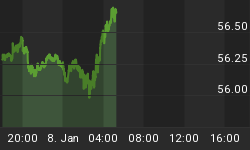The US trade deficit fell 3% in May to $55.35 billion from a revised $56.90 billion (previous $56.96 billion) in April. Imports fell 0.9% to $162.2 bln, while exports rose 0.14% to $106.9 billion.
The $55.3 billion came in line with our forecast of $55.0 billion due to the temporary stability seen in oil prices during the April-May period. As a result, imports of petroleum products fell 6.8% to $18.14 billion, the first decline since January. Imports of crude oil fell 2.0% to $13.7 billion. Since prices of crude rose 25% from their April-May levels, we expect a rebound in oil imports to place the trade deficit further in the red.

As the chart shows below, the US deficit deteriorated with China (+7.1% to $15.8 bln), Eurozone (+17.2% to $8.1 bln) and OPEC (+3% to $7.3 bln). But the trade gap eased with Japan (-8% to $6.6 bln) and Canada (-12% to $4.8 bln).
Considering the improvement in the trade figure, some economists may rush to provide bullish preliminary forecasts for Q2 GDP. But there is a strong likelihood that the 14% backup in oil prices in May and June will push back up oil imports towards the $14 billion mark. This could fuel the deficit towards the $58 billion territory, especially if US exports remain at their lackluster pace.

Dollar Jumps on Fed Comments, Budget Deficit
The post-trade deficit dollar reaction was intensified by remarks from the Philly Fed president Santomero justifying further Fed tightening by the White House 2005 budget forecast. The Administration slashed its forecast for the fiscal year 2005 deficit to $333 bln from $427 bln. The White House sees the deficit cut from 3.5% of GDP to 1.7% in FY 2007. Without questioning the calculations and assumptions of the White House, we deem these projections to be a key positive for the US dollar as they address a key structural lacuna of the US dollar.
The combined effect of hawkish Fed remarks (Yellen and Santomero affirming further tightening) and a lower budget deficit forecast is an irresistible recipe for the US dollar. The probability of a higher interest rate advantage and a lower imbalance improves the yield luster of the US currency relative to lower yielding FX, and relieves fears on the financability of the US debt position.
With the trade deficit falling to $55.3 billion, FX traders will scrutinize Monday's release of the May TICS data on capital flows. The April report showed net foreign purchases of capital flows into the US failing to cover the monthly trade deficit for the second consecutive month. Those fell to $47.4 billion in April, from $40.5 bln in March. The $47 billion was well below the $57 billion trade deficit in the same month. The dollar could get a vital Phillip on Monday in the event that the TICS come in at least $58-60 billion as it would add to the currency's improving momentum following 2 days of losses. Another potentially dollar-fuelling event will be next Wednesday's semi annual testimony by Fed Chairman Greenspan, where he is likely to stick to the script of measured tightening and a relatively optimistic economic outlook as he last did in June 9th.
This week's remaining economic data on retail sales and industrial production could be instrumental in shaping the dollar's tone for the rest of the week. Although the June retail sales figure is expected up 0.9% from -0.5%, the ex autos is expected to come up at a tepid 0.5% following a 0.2% decline. Unless these figures showed significant disappointment, we expect Chairman Greenspan to issue another upbeat testimony in light of the 200% increase in oil prices and 225% rise in rates over the past 13 months.
















